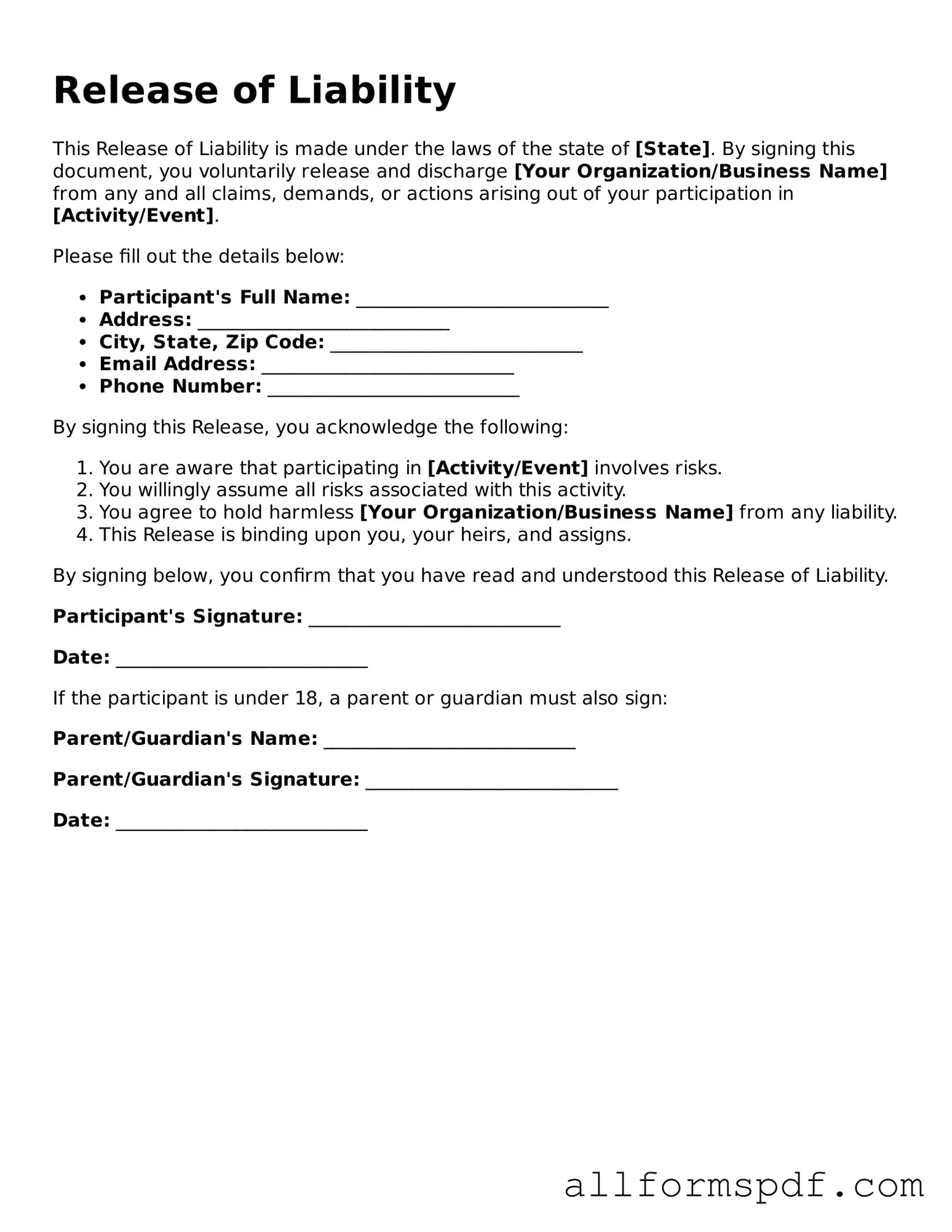Filling out a Release of Liability form can be straightforward, but many individuals make common mistakes that can lead to complications later. One frequent error is failing to read the entire document before signing. This oversight can result in misunderstandings about what rights are being waived or what risks are being accepted.
Another mistake involves incomplete information. When individuals neglect to fill in all required fields, it can render the form invalid. Essential details, such as names, dates, and specific activities, must be accurately provided to ensure the form serves its intended purpose.
People often overlook the importance of using clear and precise language. Ambiguities can lead to disputes about the scope of the release. When drafting or reviewing the form, clarity is crucial to ensure that all parties understand the terms and conditions involved.
Additionally, not having witnesses or notarization can be a significant error. Some jurisdictions require a witness or notary to validate the form. Skipping this step may affect the enforceability of the release, especially in legal proceedings.
Another common mistake is signing without understanding the implications. Individuals should fully comprehend what they are agreeing to before putting their signature on the document. Consulting with a legal professional can provide clarity and peace of mind.
Moreover, failing to keep a copy of the signed form is often overlooked. After signing, it is crucial to retain a copy for personal records. This ensures that all parties involved have access to the terms agreed upon, which can be vital if disputes arise later.
Lastly, not updating the form when circumstances change can lead to problems. If the activities or risks evolve, the Release of Liability form should be revised accordingly. Regularly reviewing and updating the document ensures its relevance and effectiveness.
